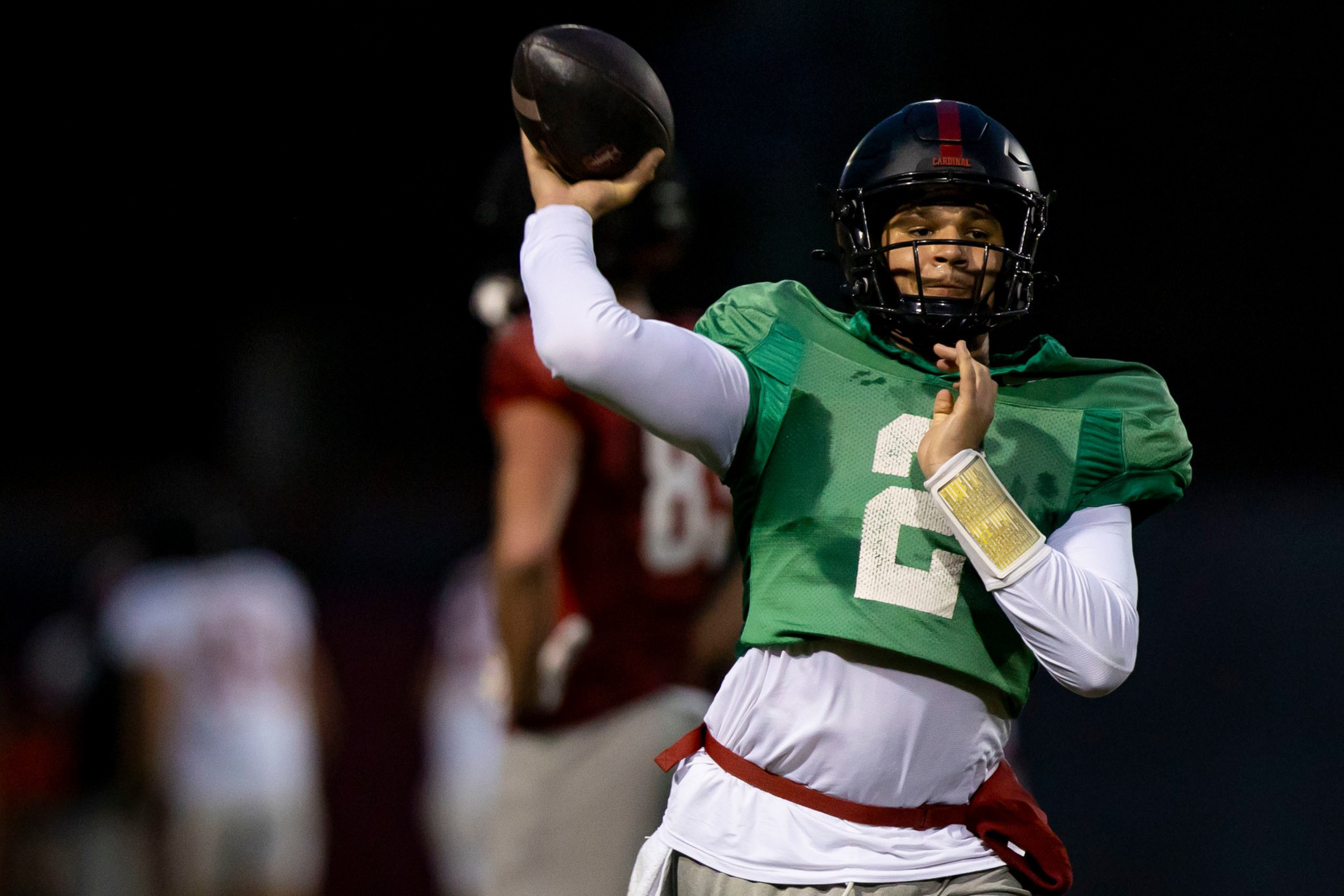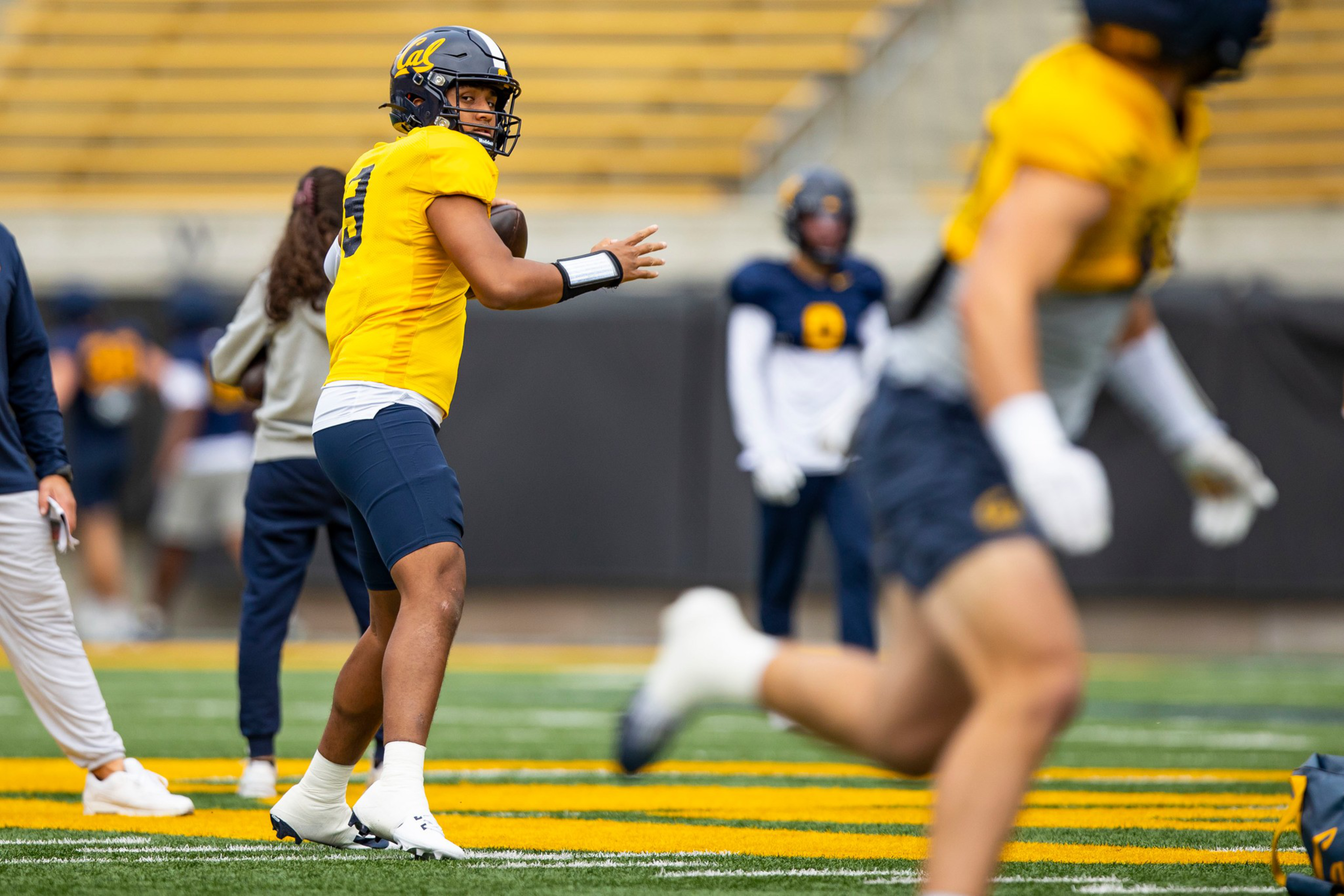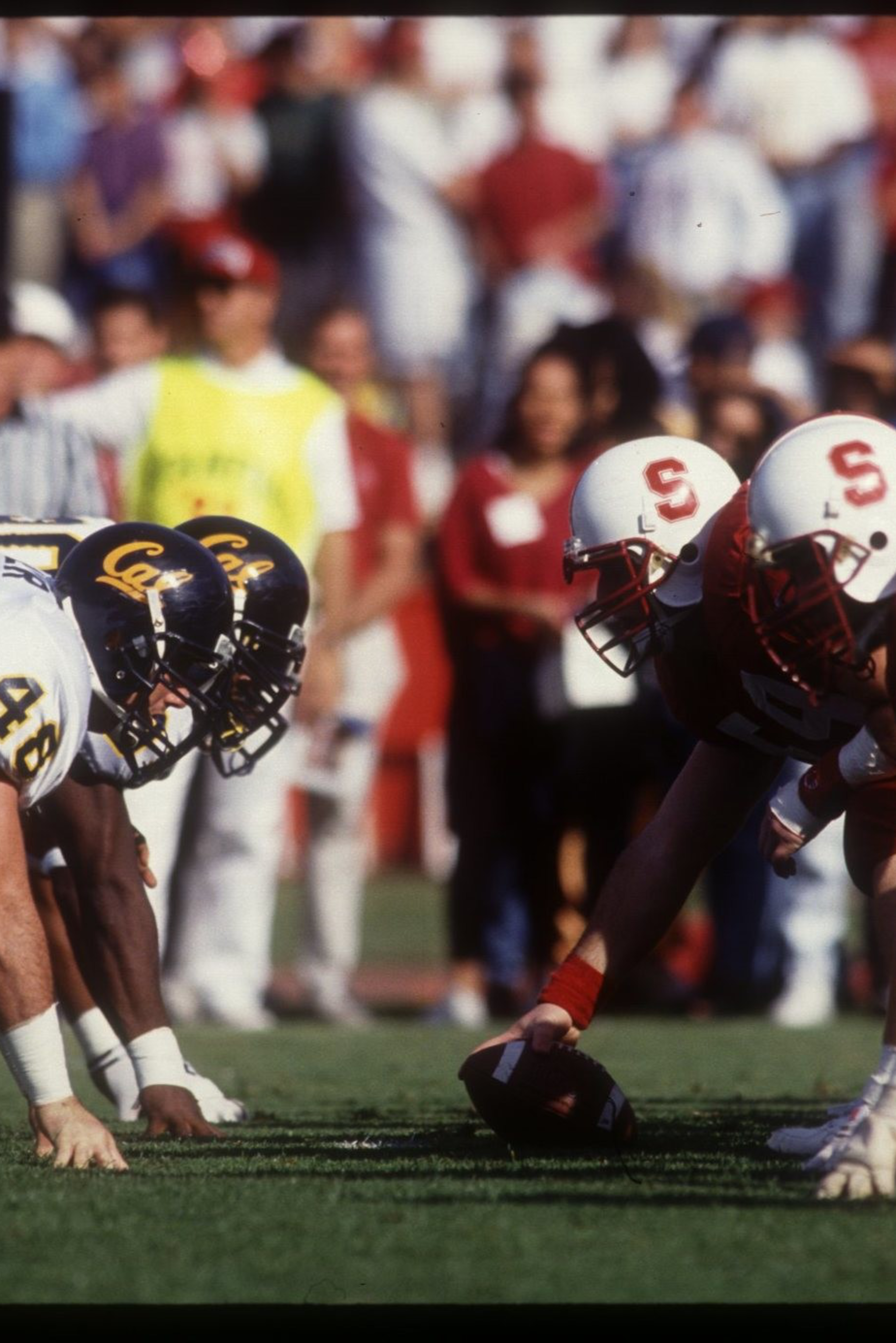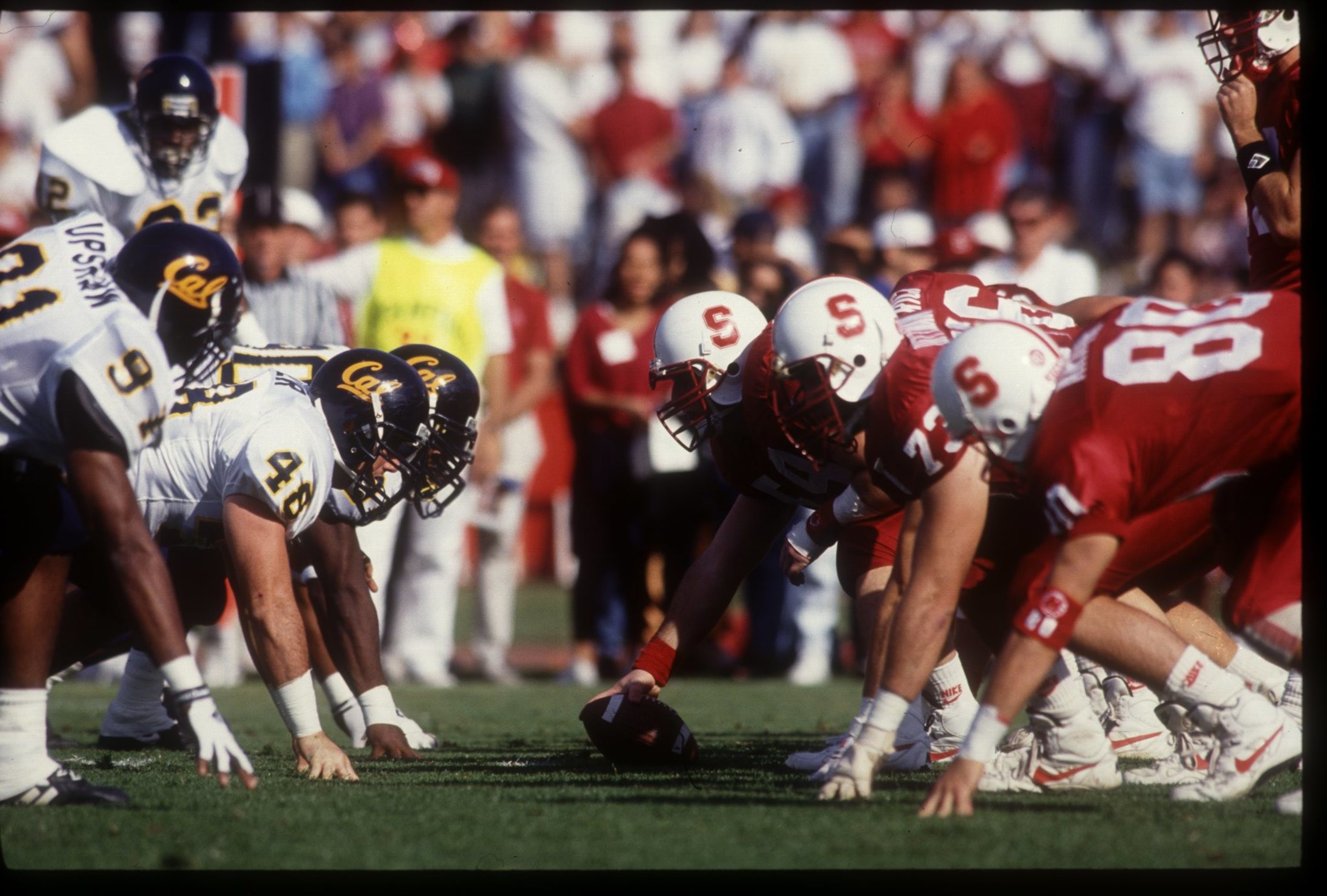Want more ways to catch up on the latest in Bay Area sports? Sign up for the Section 415 email newsletter here and subscribe to the Section 415 podcast wherever you listen.
Ron Rivera can still vividly recall the details of his first Big Game. It was 1979, and he had arrived at Stanford Stadium for the rivalry’s 82nd edition as a high school senior on a recruiting visit.
What he walked into was unlike anything he’d known: a stadium split by red and blue, roaring fans who had spent decades supporting their teams, and the gulf between “euphoria” and the “depth of despair” hanging in the balance.
By the end of the day, he exited through the winning locker room on the visitor’s side of the stadium. One glance at his mother was all it took for her to see the decision written on his face.
“It’s been a love affair ever since,” said Rivera, now going on his eighth month as Cal football’s first general manager.

Three years later, as a junior linebacker in 1982, Rivera found himself on the sideline watching as Cal hurried five lateral passes (opens in new tab) through the chaos of 144 Stanford band members who had overtaken the field in a preemptive celebration.
An instant classic. One of college football’s most iconic finishes. Forty-three years removed, “The Play” still riles up fans of both schools.
To 1972 Stanford graduate Peter Boutin, now a season-ticket holder of more than four decades, the 1982 matchup is haunting — his least favorite of the 50-plus Big Games he’s attended.
He prefers when Andrew Luck bulldozed a Cal linebacker (opens in new tab) during a 2010 runaway win. Or the “Revenge of The Play (opens in new tab)” in 1990. Or the Cardinal’s 1971 win to clinch a Rose Bowl berth. Plenty to choose from in a game that was first played in 1892.
Dick Carter started attending Cal games in the 1950s and has held season tickets in the family section in Strawberry Canyon for over 40 years — a love started and shaped by his dad, a 1936 graduate of the school then known as the University of California. After Carter’s career took him to the east coast, he gifted his dad season tickets.

“He called me one Saturday and told me he’d seen the greatest football game ever,” Carter said, recalling the era before nationwide broadcasts. “It was ‘The Play.’ ”
Today, Boutin and Carter — plus Rivera, Luck … and everyone else — see tradition slipping away in college football. The collapse of the Pac-12, foremost, was heartbreaking to Rivera.
“The conference of champions no longer exists,” Rivera said Tuesday. “All of those legacies … that, to me, is a crime as far as I’m concerned for college athletics to allow something like that to happen and for it to be as dismissed as it was.”
It seems existentially weird that Saturday’s Big Game is an ACC matchup for the second time, yet the rivalry game’s continuation represents one of the last strongholds of tradition in the sport. Media rights deals, the relentless pull of NIL, and a revolving door for transfers have all chipped away at the game’s old rhythms.

With all of the changes, the rivalry – defined by proximity, university pride, and for so long, a disgust for the opponent – features less and less animosity.
“The rivalry is a healthy one, and that’s a beautiful thing,” Carter said. “It reflects an appreciation and respect the schools have for each other.”
Boutin and Carter recall the frenzied traditions of Big Game week as students on campus: chasing the bands through San Francisco and massive bonfires at Lake Lagunita and the Greek Theatre. Now, as alumni, they point to the calmer tailgate scene of families and friends, side by side, in red and blue.
For Luck, who was hired last November as Stanford’s first GM, a competitive fire still burns. He wants to beat Cal as much as he did when he was a player, but recognizes the rivalry is at its best when both programs are good.
“You won’t hear me say too many nice things about Cal at Berkeley. Like don’t take my respect for them as I like them. I really don’t,” Luck told The Standard in October. “But I think 1) iron sharpens iron, and 2), the Bay Area, and capturing the market and giving our communities big time college football is important to both of us.”

Ever since taking his seat in Cal football’s administrative office in March, Rivera has been adamant about how Cal and Stanford are tied together in this new era. “It’s that kind of brotherly love. You love to hate them. You want to beat them, you don’t want to hurt them, and that’s really how you treat your brothers,” Rivera said. “We do appreciate that they stood up for us when it was time to move to the ACC, so it’s a special rivalry.”
The rivalry withstood the meteoric west coast shakeup, and for longtime fans, preserving the traditions remains of the utmost importance.
Last year, quarterback Fernando Mendoza engineered a fourth-quarter comeback to lead Cal to a dramatic 24-21 win. A month later, Mendoza transferred to Indiana and is this season’s Heisman Trophy front-runner.

“I’m a little worried that the more high-profile players depart, that could have some impact on how the fans, students, and alums view the Big Game,” Boutin said. “It’s such a special game and I would be hopeful that a decade from now it will be just as important as it is today.”
The biggest draw for this year’s Big Game is Cal quarterback Jaron-Keawe Sagopolutele, who has already led the Bears to six wins and drawn national attention as one of the country’s top freshmen. Last year, he took in his first Big Game from the sidelines as a recruit, in the same way Rivera’s affinity for Cal began.
If Rivera and Luck hope to keep the Big Game relevant in the years to come, keeping each program’s best players in Berkeley and Palo Alto will go a long way toward making a difference. This Saturday, Sagopolutele will take the field in the Big Game for the first time, and the Bears can’t afford for it to be his last.
“We have a quarterback right now that’s one of those guys that is attractive,” Rivera said. “We’ve seen what people have said. We’ve heard what people are saying about him. And when you have that kind of player, you’ve got to retain them, because he’s going to draw players that want to come play.”




